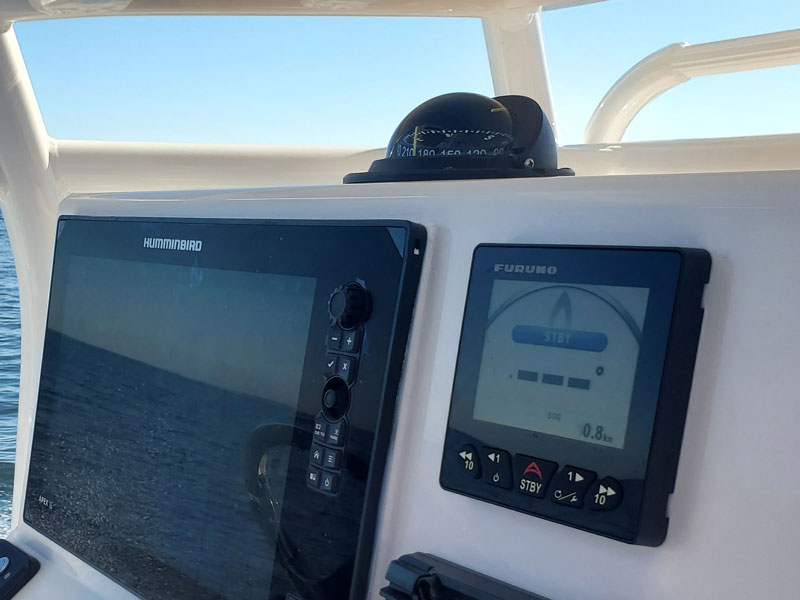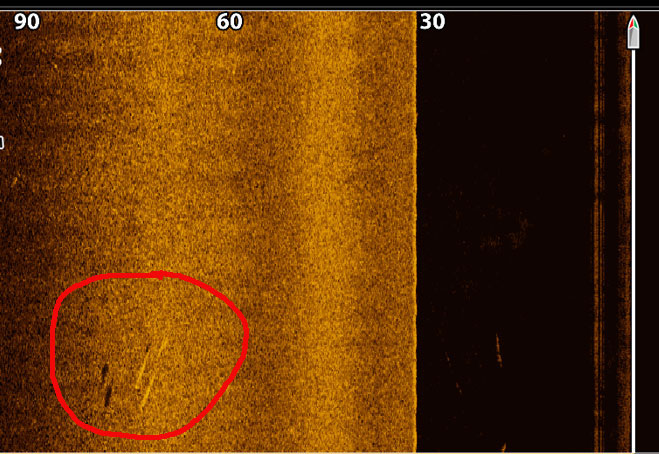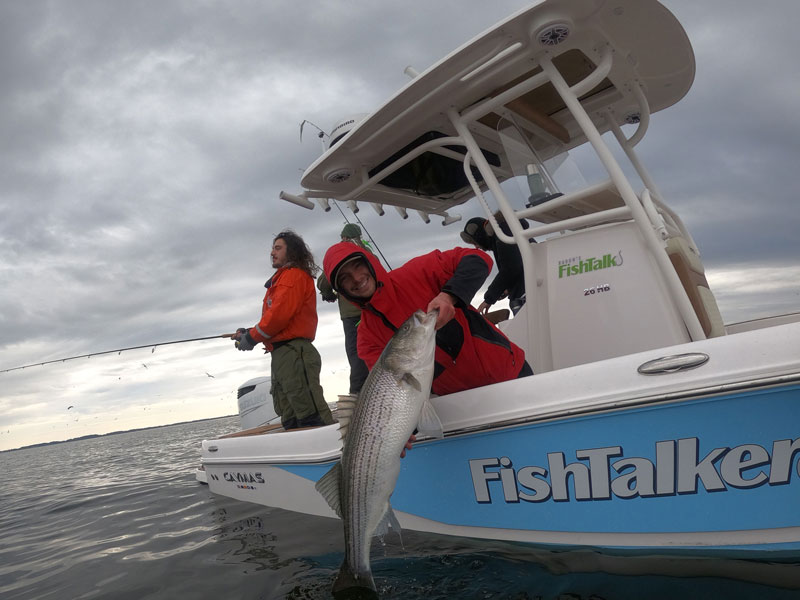Those of you who read FishTalk on a regular basis may have noticed that I swapped out my old reliable 22 Glacier Bay for a new Caymas 26 HB last year, and along with it, shifted to a completely new electronics package. That’s triggered a series of articles focused on the different experience that comes with a new boat and new gear — and the learning curve that goes along with it. Back in January we focused on the initial upgrade, and now with a couple hundred hours of use under the belt, it’s time to get a little bit deeper in depth with a look at fine-tuning some of the less conventional ways you can use the latest tech to catch more, bigger fish.

First, the details: the electronics package consists of a Humminbird Apex 16 MEGA SI head unit at the helm with a XM 14 HW MSI T side/down imaging and dual spectrum CHIRP transducer, a Solix 12 on the half-tower station, a 36-volt Minn Kota Riptide Terrova trolling motor, an HB 2124 CHIRP radar, and a Furuno NAVpilot-300 autopilot.
Sweeping with Side Imaging Sonar
Readers may remember from the article in our January edition that one of the best features of having a side-scanner you can trust is that it eliminates a lot of wasted time when fishing structure. You can run to a hotspot, sweep it, and determine at a glance if fish are present or not. If not, it’s on to the next hotspot instead of blind-casting over and over again until deciding to give up and move on. Since then, I’ve encountered another structure-fishing situation where a different tactic applies: small groups of fish scattered over large areas of debris fields.
Last spring many of the usual hotspots in the Middle Bay were bereft of fish, but there were schoolie striped bass scattered through the Tilghman Island reef site in small pods. This site is over half a mile long and nearly half a mile wide, which means there’s a lot of water to cover. The natural tendency is to dial down the side-scanning frequency and boost your range, which is great for finding schools of fish at longer distances. But a pod of three or four fish is tough to differentiate from structure at long distances and low frequencies. I found myself casting at ghosts as often as I was hooking up. In fact, taking the opposite approach turned out to be much more effective. Dialing up the frequency to MEGA and pulling range down to 100 feet I had to do a bit more searching, but when one of those pods of fish showed up on-screen there was no doubt — we’d cast, and we’d catch.

Editor’s note: My eyes are admittedly not what they used to be, and younger anglers with better vision may be able to spot pods of fish amongst the structure at lower frequencies without any problem… enjoy it while you can.
Trolling? Not Trolling
It’s often said that the one thing anglers don’t use an electric trolling motor for is trolling, and to a large degree that’s true. Spot-locking in place to cast to an area without having to anchor and jogging to make slight positional adjustments is undoubtedly where these motors shine the brightest for most Bay anglers. But through time I’ve discovered that another tactic can be just as effective at boosting my catch rate: trolling… but not really trolling, with the trolling motor.
This is a move that works well on fish that are loners, specifically, mixed speckled trout, rock, and redfish in shallow areas but not up against shorelines. Think: stump fields and grass beds. In this scenario, drifting across a large area will often prove more productive than sticking to one spot. But, what if the wind’s blowing the wrong way, is blowing too strong, or isn’t blowing at all?
You could use the trolling motor to ease across the area in a controlled manner, but steering a 26’ boat with a bow-mount requires constant attention. With the chartplotter and trolling motor integrated, however, you can set in a waypoint on the chartplotter and then tell the motor to take you there. Dial in the right speed and anglers can cast and retrieve as you go, while you can simultaneously toss a line out the back and troll it. Since the path is locked in, your hands are free and you can focus on what you want to do — mind the trolled line and/or cast your line and hook up — rather than having to pay attention to steering the boat.
Trolling? Yes, Trolling!
The Furuno NAVpilot-300 autopilot is obviously more for navigation than fishing, but it does come in quite handy when trolling. First because it allows you to step away from the wheel and help land fish or rig lines as necessary (so long as you maintain a watch, of course). Beyond that, however, the “Figure Eight” mode is particularly useful for relocating schooling fish after a strike, since you cover water all around the location of the strike while crossing back over it multiple times.
Offshore anglers will also want to familiarize themselves with the “Zig-Zag” mode. Often pelagic predators take a swipe as a lure or bait passes in and out of the whitewater, and trolling in zig-zags to keep those baits swinging back and forth is always more effective than trolling in a straight line. Doing so manually, however, takes constant attention, and regularly leads to long zig-zag-less stretches before you think to turn the wheel again. In this case, however, you can press the button and stop looking over your shoulder to see if it’s time to zig or zag.
Most high-end autopilots have functions like these, and the key to taking advantage of them is simply force yourself to make the time to learn how to use them. A peek at the directions (travesty!) and a bit of practice prior to going fishing is all it takes.
Figuring Out Fishfinders

Speaking of how to learn this stuff: remember, it’s nearly impossible to “figure it out” with lines in the water when your focus is divided — you need to dedicate time on the water to learning missions. Stay in cell range, and use your phone to Google up answers to questions as they arise. Once you figure out a specific task, practice it three or four times over. Frequency, range, and contrast changes; jogging position; making waypoints and setting the motor to track to them; setting the autopilot — you’ve got to concentrate on the task at hand when you’re not being distracted by a hot bite or by trying to figure out how to catch something when the action is slow.
Whether you have an old system or a new one, few of us ever make the effort to truly master our electronics. I know that even with hundreds of hours of use and a little bit of cheating — the Humminbird pros have joined me aboard the Caymas a couple of times for some tutoring — there’s still a ton of stuff I have yet to learn.
Stay tuned.